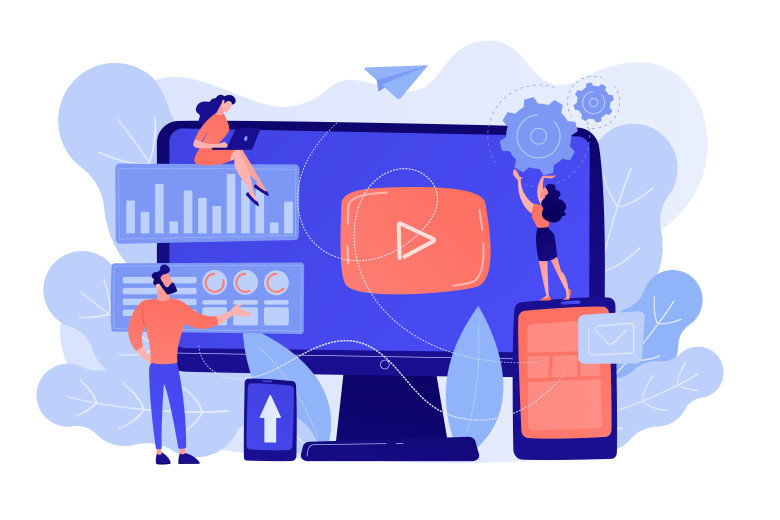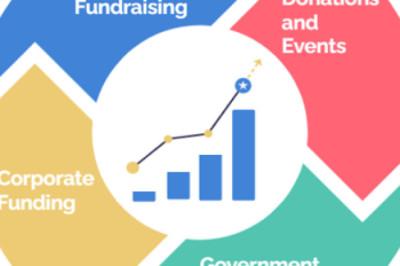views
As a small business owner, you wear countless hats. Marketing is crucial, but your time and budget are precious resources. You hear about powerful tools like programmatic advertising, often used by big brands with deep pockets, and wonder: Can this actually work for my business? Is it worth the investment and the learning curve?
It’s a valid question. Programmatic advertising — using technology to automatically buy and place digital ads in real-time — sounds complex, and frankly, it can be. But the landscape is changing. What was once the exclusive domain of large corporations is becoming increasingly accessible, offering small and medium-sized businesses (SMBs) compelling opportunities to reach the right customers efficiently. This guide will cut through the jargon, explore the real benefits and challenges for businesses like yours, and provide practical steps to help you decide if programmatic advertising is a worthwhile venture.
What Exactly Is Programmatic Advertising (in Plain English)?
Imagine wanting to place an ad online. Traditionally, you might negotiate directly with a website owner. Programmatic advertising automates this entire process. Think of it like a super-fast, super-smart online auction for ad space.
When someone visits a website or uses an app with ad space available, an auction happens in milliseconds. Technology analyzes information about the visitor (anonymously, based on things like browsing habits, location, or demographics) and your predefined target audience. If there’s a match, your ad platform automatically bids against other advertisers for that specific ad spot. The winning bid gets to show their ad to that specific person, at that specific moment.
The beauty is that this happens millions of times per second across countless websites and apps, allowing you to target specific individuals rather than just broad website audiences.
Why Should a Small Business Even Consider This?
Okay, it’s automated and fast, but why is that good for you? Programmatic advertising offers several game-changing benefits, especially relevant for SMBs:
1.Laser-Focused Targeting: Forget casting a wide, expensive net. Programmatic allows you to pinpoint your ideal customers based on detailed demographics, interests, online behavior (like websites visited or searches made), purchase intent, and even location (down to a specific radius around your store). This means less wasted ad spend showing ads to people who aren’t interested.
2.Efficiency and Time Savings: The automation handles the tedious manual tasks of negotiating ad buys and placing ads. AI-powered platforms can also optimize your campaigns in real-time, shifting budget towards what’s working best without you needing to constantly tweak settings. This frees up your valuable time.
3.Compete with the Big Players: Programmatic levels the playing field somewhat. By focusing on reaching the right individual, rather than just buying space on a popular site, you can compete for valuable customer attention even against businesses with larger budgets.
4.Wider Reach Across Channels: Your customers aren’t just on one platform. Programmatic allows you to reach them across a vast network of websites, apps, streaming audio services, and even Connected TV (CTV) platforms, creating a cohesive brand presence.
5.Measurable Results & Insights: Unlike many traditional advertising methods, programmatic provides detailed data. You can track exactly how many people saw your ad (impressions), clicked on it (CTR), and took a desired action (conversions). This transparency helps you understand what’s working, calculate your Return on Investment (ROI), and make smarter marketing decisions. Statistics often show a higher, more trackable ROI compared to less targeted methods.
Let’s Be Real: The Challenges for SMBs
It’s not all seamless automation. Small businesses face specific hurdles when considering programmatic:
•Complexity & Learning Curve: Understanding the ecosystem (DSPs, SSPs, RTB, etc.) and setting up campaigns effectively requires learning.
•Potential Costs & Minimums: While becoming more accessible, some platforms (especially self-serve Demand-Side Platforms or DSPs) might have minimum spend requirements or require significant investment to yield results.
•Ad Fraud & Viewability: Ensuring your ads are actually seen by real humans (not bots) and appear in viewable positions requires vigilance and understanding tools like ads.txt or working with reputable platforms.
•Creative Quality: Programmatic delivery is only half the battle; your ads themselves need to be compelling and well-designed to capture attention.
•Data Privacy Changes: The move away from third-party cookies requires adapting strategies to rely more on first-party data, contextual targeting, and other identity solutions.
The Verdict: Is Programmatic Worth It for Your Small Business?
There’s no single ‘yes’ or ‘no’ answer, as it depends heavily on your specific business, goals, budget, and willingness to learn or partner.
Programmatic advertising is likely worth considering if:
•You have clearly defined target audiences: The more specific you can be about who you want to reach, the more effective programmatic targeting becomes.
•You operate in a competitive digital space: Programmatic can help you find and reach niche audiences that might be missed by broader campaigns.
•You value data and measurable ROI: If tracking performance and optimizing based on data is important, programmatic offers robust capabilities.
•You have the budget (or access to platforms without high minimums): While becoming more accessible, it still requires investment. Research platforms or partners that cater to SMB budgets (some start around $500/month, others higher).
•You are willing to invest time in learning OR partner with experts: You either need to dedicate time to understand the platforms and strategies or find a trusted agency or platform partner (like those mentioned in research, e.g., AudienceX, iPromote, Choozle) who specialize in SMBs.
It might not be the right fit (or at least, not yet) if:
•Your budget is extremely limited: Other channels like targeted social media ads or local SEO might offer a lower entry point.
•Your target audience is very broad and easily reached through other means: If your customers aren’t heavily online or are easily targeted elsewhere, the complexity might not be justified.
•You lack the time or resources to manage campaigns or vet partners: Poorly managed programmatic campaigns can waste money quickly.
Practical Steps to Get Started (If You Decide to Explore)
If you’re leaning towards giving programmatic a try, here’s a simplified roadmap:
1.Define Crystal-Clear Goals: What exactly do you want to achieve? More website traffic? Leads for your service? Online sales? Be specific and measurable (e.g., “Increase online sales by 15% in Q3” or “Generate 50 qualified leads per month”).
2.Know Your Audience Deeply: Go beyond basic demographics. What are their online habits? What websites do they visit? What are their interests and pain points? Use existing customer data, surveys, and market research.
3.Set a Realistic Budget: Start small to test the waters. Determine what you can comfortably allocate per month. Remember to factor in potential platform fees or partner costs.
4.Choose Your Path: DIY Platform or Partner?
•DIY (Self-Serve DSP): Requires more learning and time investment but offers direct control. Look for platforms known for being SMB-friendly (e.g., some features within Google Marketing Platform, or dedicated SMB platforms).
•Partner/Managed Service: Agencies or platforms (like AudienceX, iPromote, etc.) manage campaigns for you. Less control, but leverages expertise and often provides access to better tools/inventory without high minimums. Vet partners carefully.
5.Develop Compelling Ad Creatives: Create high-quality visuals (images, videos) and clear, concise copy tailored to your target audience and goals. Consider different ad formats (display, native, video).
6.Set Up Your Campaign: Carefully configure targeting parameters (demographics, location, interests, behaviors, contextual relevance). Implement conversion tracking correctly (e.g., using pixels or server-side tracking) to measure success.
7.Launch and Monitor Closely: Don’t just “set it and forget it.” Keep a close eye on performance metrics in the initial days and weeks.
8.Optimize, Optimize, Optimize: Based on the data, make adjustments. Pause underperforming creatives or placements. Refine targeting parameters. Adjust bids. A/B test different elements.
The Takeaway: Smart Power for Small Business
Programmatic advertising is no longer an exclusive tool for corporate giants. For small businesses willing to approach it strategically, it offers powerful capabilities for precise targeting, efficient spending, and measurable growth. While challenges exist, particularly around complexity and initial investment, the potential to reach your ideal customers effectively and compete in the digital arena makes it a compelling option.
Evaluate your goals, resources, and audience. Start small, focus on learning, track your results diligently, and don’t hesitate to seek expert help if needed. Programmatic advertising might just be the smart investment that helps your small business punch above its weight and achieve its marketing goals.
🚀 Looking to scale your business with programmatic advertising? Performena helps brands in Dubai maximize their digital ad performance with cutting-edge programmatic strategies. Let’s talk!
For More Info :
Preatoni Tower, Unit 2406, Cluster L, JLT, Dubai, UAE.
UAE :+971 4 835 9935 /
IN :+91–8553464715
sales@performena.com
Monday to Friday 10am — 7pm
Website : https://performena.com/contact



















![Borbaad (2025) [Film Review] – A Power-Packed Blend of Action, Emotion, and Drama](http://www.cutmirchi.com/upload/media/posts/2025-06/10/borbaad-2025-film-review-a-power-packed-blend-of-action-emotion-and-drama_1749538515-s.jpg)

Comments
0 comment